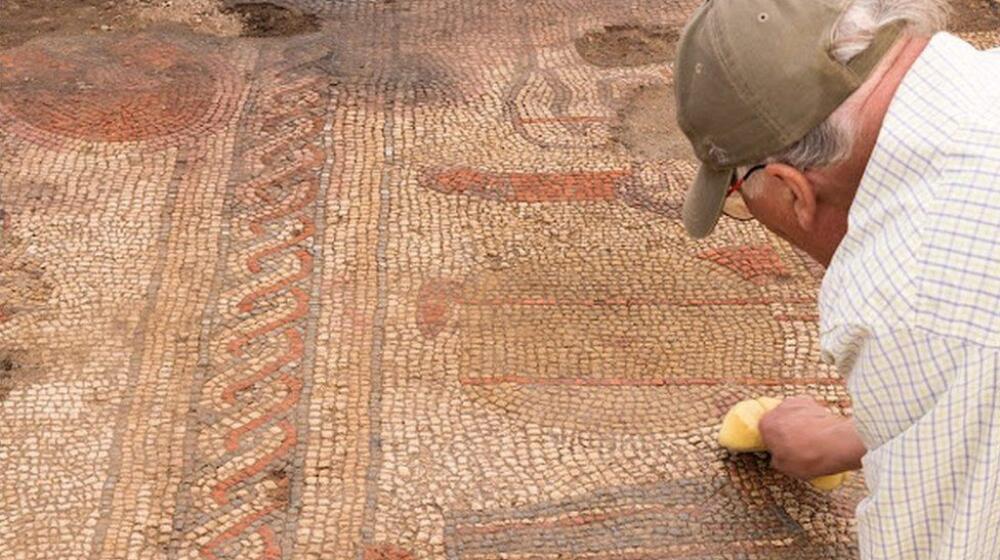
We’ve been telling people for a long time that Rutland has ‘much in little’ and now there’s more proof, with an internationally significant discovery made here. A rare Roman mosaic – the first of its kind in the UK – has been found in the county. After being studied in secret to keep it safe, the discovery was announced on Thursday 25 November 2021 and designated as a Scheduled Ancient Monument.
A Roman villa complex containing a rare mosaic was discovered beneath a farmer’s field in Rutland in 2020. The mosaic is the first example in the UK displaying scenes from Homer’s The Iliad, and one of only a handful from across Europe. It is considered one of the most remarkable and significant Roman mosaics ever found in Britain. The site was discovered by the landowner’s son and has been investigated by archaeologists from the University of Leicester, working in partnership with Historic England and local heritage volunteers.
Rutland County Council is working with Historic England to ensure this incredible find can be enjoyed and understood by future generations. The site is in private ownership and we understand a further excavation is planned for this summer (2022), which may reveal even more about the whole site; see BBC article ‘Surveys reveal large Roman villa complex at site‘.
The discovery will be featured in BBC Two’s ‘Digging for Britain’ series in 2022, we believe the episode featuring Rutland will be Tuesday 4th January at 8pm, check on the BBC series information here.
Find out more by watching a 4 minute overview from the University of Leicester of the site, or watching the 1.5hour online talk by excavation leader, Jennifer Browning
Some relevant history we’ve included in previous articles include;
ROMAN CASTERTON
Nearly two thousand years ago, the invading Roman army made its way northwards along the route of Ermine Street, pausing in Great Casterton to build a camp to protect a strategic bridge over the River Gwash.
The Romans erected a fort at Great or Bridge Casterton shortly following the invasion of A.D. 43. It protected a strategic crossing of the River Gwash and lay alongside the Roman Road, Ermine Street. The fort was in use for around 30 years, after which a Roman staging post or ‘Mansio’ was established.
The first civilian settlement probably grew up to serve the needs of the fort and then served as a local market town. In the late 2nd century, the town was enclosed by a great stone wall and ramparts. The site was re-defended with new corner bastions and a deeper ditch in the second half of the 4th century, and occupation of the town continued well into the 400s.
